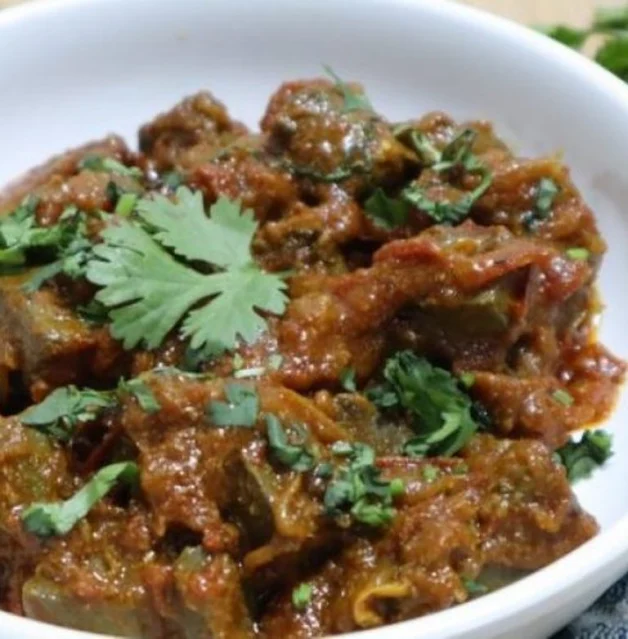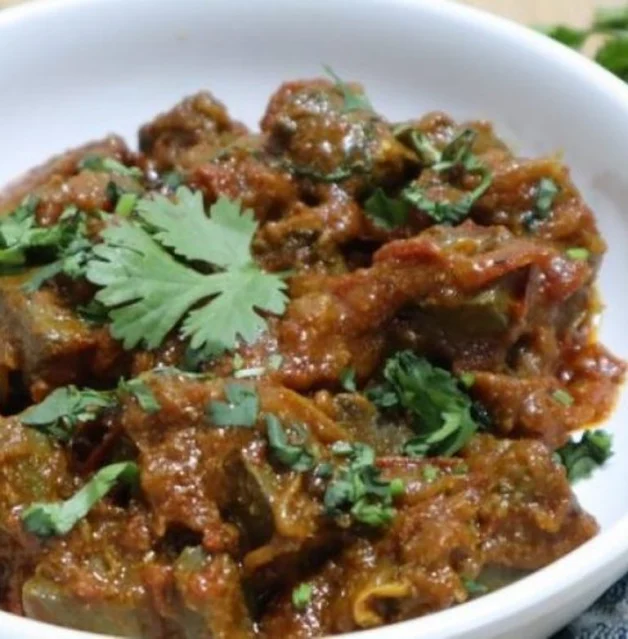Kaleji Masala || Kaleji Recipe || How to Make Kaleji Fry Recipe with step-by-step photos
Kaleji Masala is an amazingly delicious recipe made using liver,
kidneys, the heart, cooked along with onion, spices, and yogurt, and then roasted kaleji gurda mixed masala., no words to describe the unique and
delicious taste
This is simply the best recipe to make the most delicious and
tender liver masala. I am using mutton liver and gurda mix. You can use it by choice. This tasty bhuni kaleji masala is prepared with a few
spices.
The main ingredients are our traditional black spice powder, which
includes peppercorn and cardamom.m This spice is added to enhance the taste of
bhuni kaleji, black cardamom, and ginger, always bringing a special and unique taste to the meal.
Give it a try by using this spice in your dish
I learned this recipe from my mother, who used to make it at special events or Eid al-Fitr. We love and enjoy it with basmati bagara rice or paratha. This tasty dish can also be served with rumali rotis and chapatis. So let’s begin.
I learned this recipe from my mother, who used to make it at special events or Eid al-Fitr. We love and enjoy it with basmati bagara rice or paratha. This tasty dish can also be served with rumali rotis and chapatis. So let’s begin.
If you have tried this Kaleji Masal, don’t forget to rate the recipe. You can also follow me on social media to see what’s latest in my kitchen!
Like Our Videos? Then, follow us and subscribe to us on YouTube for the latest recipe video updates.
To
prepare kaleji gurda mix, first wash the under running water to remove
excess blood, keep aside, take all ingredients, and prepare them all.
Whisk the yogurt
Heat the oil and saute the onion slices, then put the kaleji into the pot.
Fry them until they change color.
Keep stirring by adding ginger garlic paste and papaya paste.e
Add powder spices and stir to combine well.
Keep on stirring till the water dries up, you can see in the picture below water has almost evaporated.
Now add the remaining onion to the kalejimixtured, keep mixing by adding black ground spice powder.
Keep mixing by adding yogurt.t
Constantly keep mixing till oil is separated, pour hot and boiled water into the kaleji masala, and further stir well.
Bring it to a boil, cover the pot, and allow to cook for 30-40 minutes over medium-low heat.
Remove the li, add salt to taste, mix well, then give it another 5 minutes to simmer.
Kaleji Masala is ready to serve
Kaleji mixed masala is served with flavored rice, chapatis, paratha, and loaf bread, along with cumin raita.
Kaleji Masala is an amazingly delicious recipe made using liver, kidney, and the heart cooked along with onion slices, and yogurt..
Ingredients:
- 500g, mutton gurda kaleji
- 1 large onion, finely chopped
- 1 ½ tbsp ginger garlic paste, freshly ground
- ½ tsp red chili powder
- Salt to taste
- 100g, homemade yogurt beaten
- 1 tsp, handful of crushed coriander seeds
- 1/3 tsp turmeric powder
- 1 tsp red chili flakes
- 1/8 tsp citric acid
- 1 ½ tsp handful of ground black pepper
- ½ cup canola oil/olive oil
- 2 cubes.papaya cubes or 1 tbsp frozen/fresh
How to Make Kaleji Masala Recipe?
- Heat the oil, en add 1/3 sliced onion, sauté them till they turn translucent, and reserve ¼ for use later.
- Put washed kaleji mix, then fry them over a medium-high flame until they change color.
- Add ginger-garlic paste, and stir well by adding papaya cubes
- Start tw combine all spices, red chili powder, red chili flakes, salt, turmeric powder, and crushed coriander powder
- Note: Add salt at the end
- Stir to mix well over medium flame
- Now, put the remaining onion slices along with ground black pepper powder
- Roast them over r low-medium flame until the water dries out
- Keep mixing by adding yogurt
- Constantly keep mixing till the oil is separated
- Pour hot and boiled water into the kaleji masala, and further stir well
- Bring it to a boil and then cover the pot
- Cook it for around 30-40 minutes over medium-low heat
- Keep stirring occasionally
- Reduce the heat to low, then remove the lid, add salt further, and stir to mix well
- Simmer it for around 5 minutes on very low heat
- Turn off the flame and transfer it to the serving bowl/dish
- Tasty Mutton Kaleji mixed masala is ready to serve
- Kaleji mixed masala is served with flavored rice, chapatis, paratha, and loaf bread, along with cumin raita
*Not be duplicated, rewritten, or published without permission- Thank you!


























2 comments
Your Kaleji Masala recipe is fantastic, and I tried it last night! The blend of spices was spot-on, creating a flavor explosion that elevated the dish. One tip I found helpful was to marinate the liver in the spices for a bit longer to allow those flavors pro recipe to really penetrate. Also, searing the kaleji on high heat added a perfect caramelization, enhancing both texture and taste. Thanks for sharing this incredible recipe! Can't wait to try more of your cooking tips and tricks
thanks so much to like my recipe stay connected
Have you any doubts about this blog kindly let me know
EmoticonEmoticon